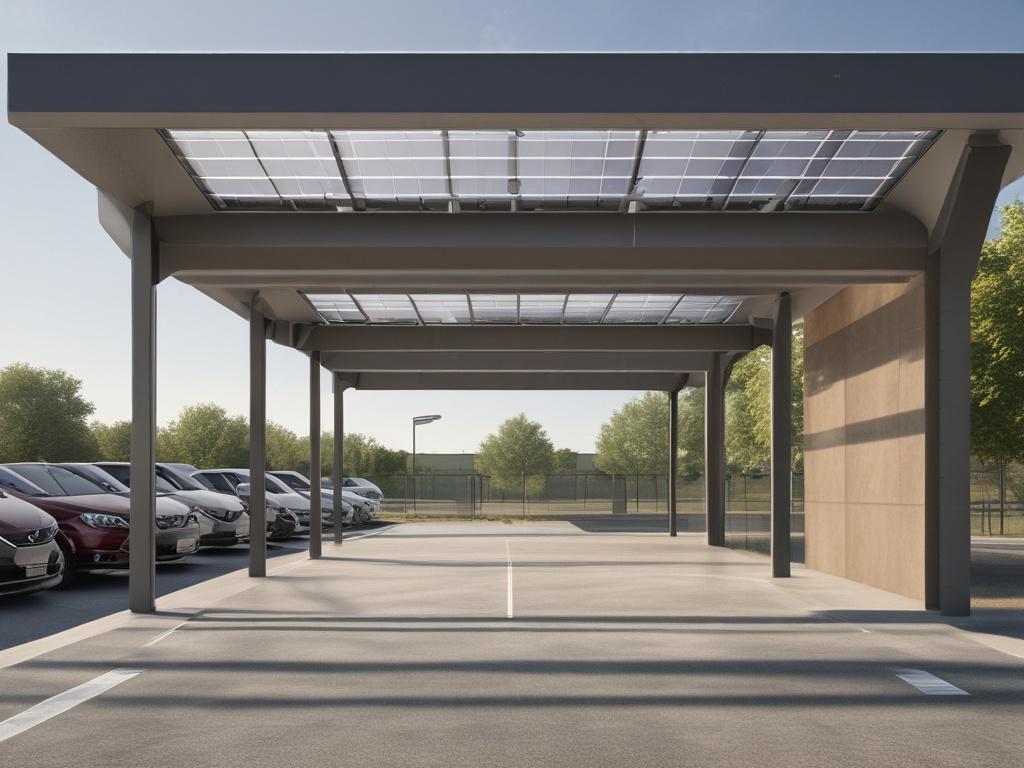
As businesses increasingly seek sustainable solutions to reduce their carbon footprint and cut energy costs, commercial solar carports have emerged as a popular choice. These practical installations not only provide covered parking but also harness the power of the sun to generate renewable energy. By integrating solar technology into their operations, companies can enhance their brand image, attract eco-conscious customers, and position themselves as leaders in environmental stewardship.
However, the innovation doesn't stop with carports. Beyond carports, companies are embracing creative solar applications like solar awnings, building-integrated photovoltaics, and canopy structures over walkways. These forward-thinking solutions are redefining corporate landscapes, offering additional opportunities for energy generation while improving the aesthetic appeal of commercial spaces. In this blog post, we will delve into the benefits of commercial solar carports and explore the transformative impact of innovative solar installations on the sustainability efforts of businesses.
Exploring the benefits of commercial solar carports for businesses
Commercial solar carports offer a multitude of advantages that businesses can leverage to enhance their operations and sustainability goals. By providing shaded parking areas, these structures protect vehicles from the elements while simultaneously generating renewable energy. This dual purpose not only improves the aesthetic appeal of business premises but also contributes to cost savings through reduced electricity bills. Companies can harness the power of the sun, generating energy that can now be directed towards powering their facilities or even charging electric vehicles. Furthermore, by investing in solar carports, businesses position themselves as environmentally responsible, enhancing their brand image and attracting eco-conscious consumers.
Additionally, commercial solar carports often come with various financial incentives and tax benefits. Many governments and local authorities offer grants, rebates, and tax credits for businesses that invest in solar energy solutions, making the initial investment much more affordable. Over time, the return on investment becomes tangible as energy savings compound, leading to increased profitability. Moreover, the scalability of solar installations means that businesses can start with a single carport and expand as their needs grow. Overall, commercial solar carports not only contribute to environmental sustainability but also serve as a strategic business decision with substantial long-term benefits.
Beyond carports: Innovative solar applications transforming corporate landscapes
Companies are increasingly recognizing the value of integrating solar technology into their architectural designs and outdoor spaces. Beyond traditional carports, businesses are exploring creative solar solutions that not only harness renewable energy but also enhance the aesthetics and functionality of their properties. Solar awnings, for instance, provide shade while generating clean energy, making them ideal for storefronts and outdoor dining areas. These installations allow businesses to create inviting spaces for customers while simultaneously reducing their energy costs.
Building-integrated photovoltaics (BIPV) offer another innovative approach to solar energy adoption. By seamlessly incorporating solar cells into building materials like roofs, windows, and facades, businesses can maximize the use of their structures without sacrificing design or efficiency. Additionally, canopy structures over walkways can serve a dual purpose, providing shelter while generating power from the sun. These creative applications not only help companies achieve sustainability goals but also demonstrate a commitment to environmental responsibility, appealing to eco-conscious consumers and investors alike.
How creative solar solutions like awnings and canopy structures enhance sustainability
Creative solar solutions such as solar awnings and canopy structures offer businesses a unique opportunity to enhance their sustainability efforts while simultaneously maximizing their use of available space. Solar awnings not only provide shade but also harness energy from the sun, reducing reliance on traditional power sources. By installing these awnings above windows or entrances, companies can generate clean electricity and decrease their energy costs, all while improving the aesthetic appeal of their facilities. This dual function significantly boosts the value of commercial properties, promoting a greener image that attracts environmentally conscious consumers.
Canopy structures over walkways present another innovative approach to integrating solar energy into the business landscape. These canopies can protect pedestrians from weather elements while serving as functional solar installations. By utilizing the space above walkways, companies can create charging stations for electric vehicles and shaded areas for outdoor activities, enhancing employee and visitor experiences. This transformation leads to a more sustainable environment, promoting energy efficiency and reducing a company's overall carbon footprint. Embracing these creative solar applications demonstrates a commitment to sustainability and positions businesses as leaders in the ongoing shift toward renewable energy solutions.